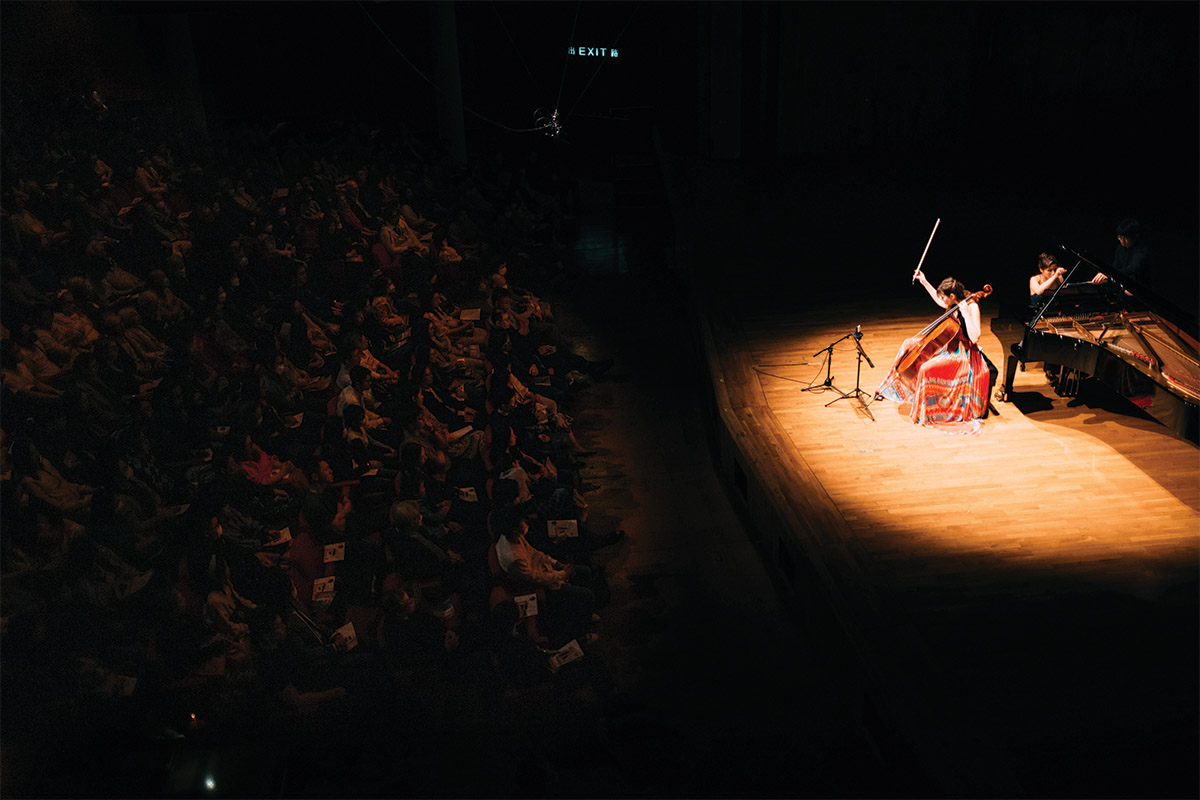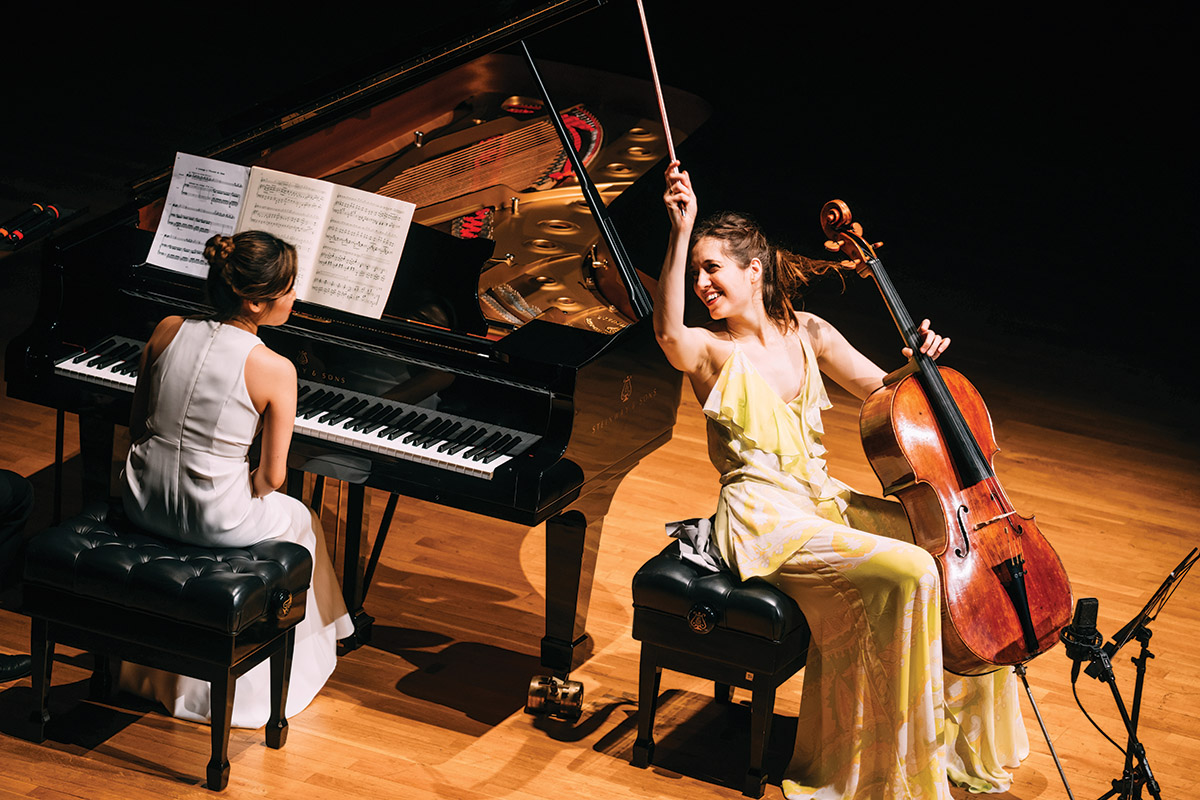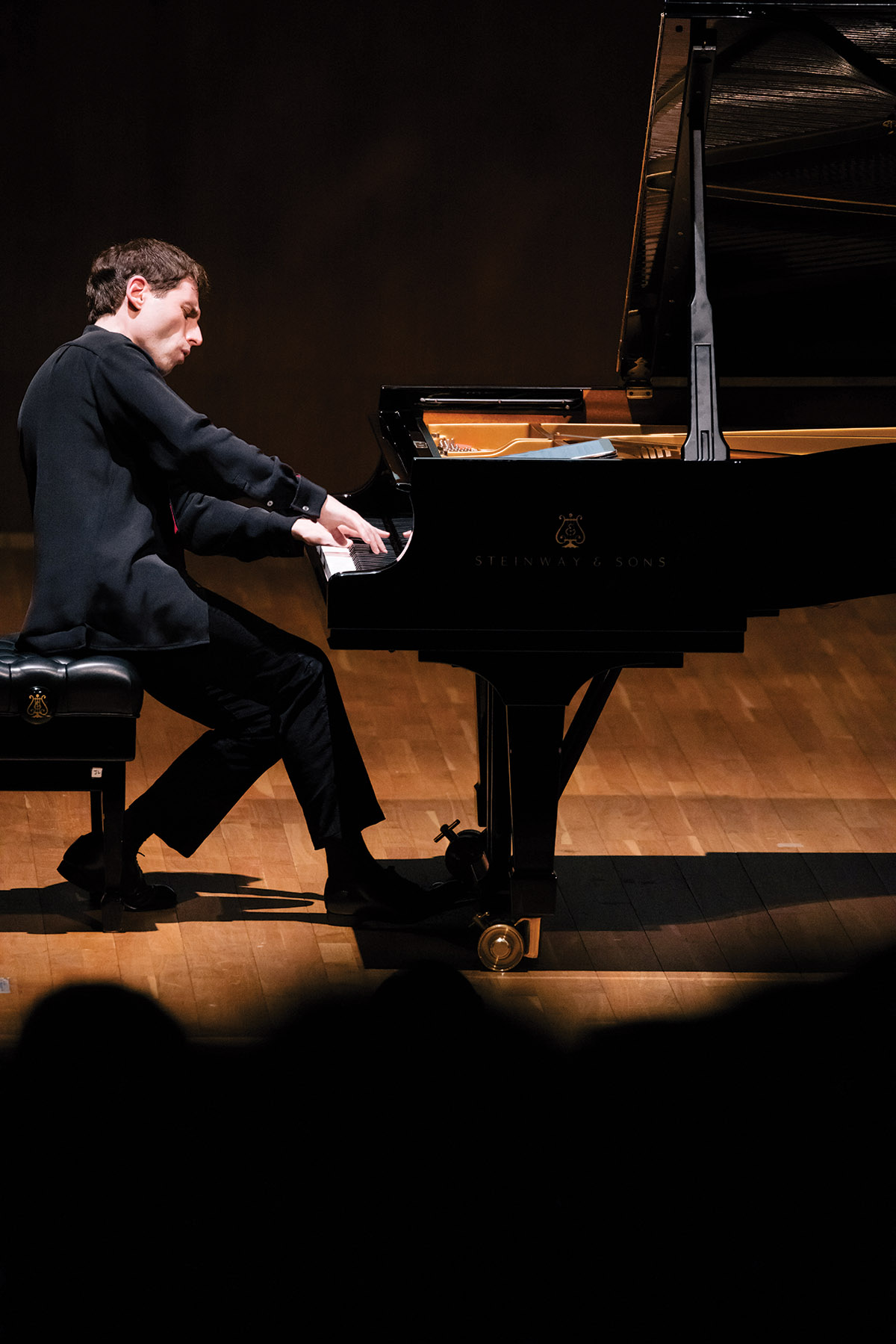This duo recital started with Chopin’s Introduction and Polonaise Brillante in C major for cello and piano , op. 3 . Camille’s 1730 “Feuermann” Stradivarius once belonged to the cellist August-Joseph Franchomme (1808–1884), a good friend of Chopin, and the cellist rewrote the cello parts of this masterpiece.
The duo continued to showcase their virtuosity and manifest distinctive emotions via a programme of substantial cello–piano duo repertoire. This includes the vivid and intense Grieg Sonata amalgamating romantic harmonies and folk melodies, followed by Messiaen’s delicate, melancholy and beautiful Louange à l’éternité de Jésus from Quatuor pour la fin du temps. The programme ends with the powerful and romantic Franck’s Violin Sonata in A major, transcribed for cello and piano.
As for encore, the duo performed the third movement of Chopin’s Cello Sonata, op. 65, dedicated to Feuermann; Popper’s Hungarian Rhapsody; and Saint-Saëns’s “The Swan” from the Carnival of the Animals – drawing the concert to a grand ending.
Boris began with one of Beethoven’s last piano sonatas, no. 31, op. 110, followed by two Chopin’s Ballades, no. 1 and no. 4, and ended with Schumann’s Carnaval, op. 9. The recital expressed technical brilliance and sensitivity, and Boris brought us two of Rachmaninov’s Preludes and Prokofiev’s Suggestion Diabolique as an encore, marking the finale of the Beares Premiere Music Festival.
Interested readers will be able to find out more about the Russia-born, Israel-raised internationally acclaimed artist in the current and next issues of Vantage.
Wearing a traditional red áo dài with embroidery flowers, Tra Nguyen, British-Vietnamese pianist, opened the recital entitled “Colour Play”, as part of the Royal Academy of Music Hong Kong Alumni Association 2023 recital series.
In the first half of the evening, Nguyen took the Borenstein: 6 Etudes, Opus 66, and the Borenstein: 6 Etudes, Opus 86, with each individual etude having its own unique character. Her technical prowess showed immediately in her ability to deal with complicated polyrhythm from the simple ostinato bass of the opening Ostinato Etude to the explosive ending with panache. Likewise, the warm and sonorous melodic line in the Half Moon Etude had poised deliberation and spontaneity. The Tango Etude was rhythmical and stylistically articulated with interesting choice of textural voicing. Next, the Arpeggios Etude was beautifully controlled and the subtleties inherent in the contour of the phrase line were well explored. Kangding Qingge Etude was a tour de force and was interpreted with a dreamy imagination with brilliance in tone colour. Though the complicated writing of the Mephisto Etude made it rather difficult to fully appreciate all the elements on first hearing, it was excitingly played and the whole was shaped into a coherent performance with empathy for the unfolding moods and emotions. Whilst the Staccato/Legato Etude was light and playful, the Chords Etude was dramatic and full of intensity. The colourful and carefully voiced Hidden Melodies Etude contrasted well with the characterful Brazilian Etude. The Toccata Etude was played in an exciting perpetual mobile fashion with abundant energy and spirit. Finally, the Japanese Gardens displayed appropriate freedom with tonal refinement.
The Chopin: Sonata in B minor, Opus 58 occupied the entire second half of the recital, in a reading that found Nguyen both intimate and passionate. After dispatching the opening Allegro maestoso with grandeur and exuberance, she brought a magical and transcendental quality to the second theme, underlining in her distinct exploration of abundant colour palette. The Scherzo was light and sparkling and the Largo held an appropriately ethereal quality with some beautifully controlled long melodic lines. The rhythmical and dramatic Finale: Presto non tanto ended with bravado and brilliance.
This was an accomplished recital which displayed admirable sense of bravura, dazzling techniques, sanguineous passion and performance flair.
[Dr Jiun Yoong Lim]







